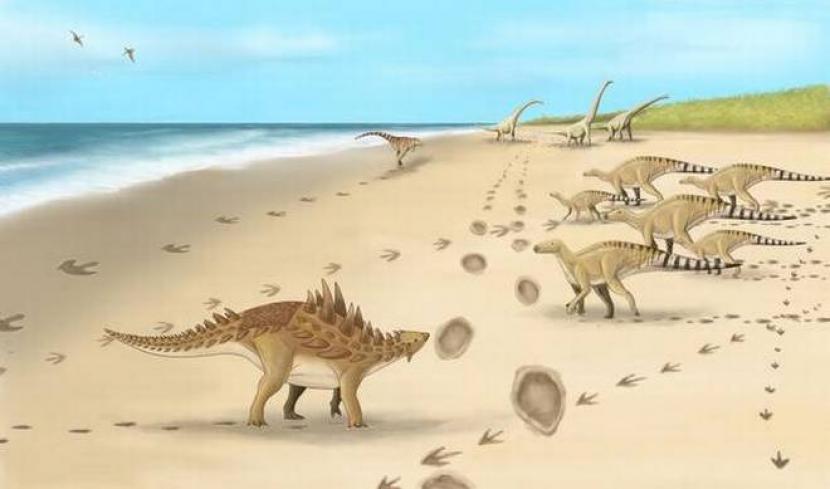This trail measures 80 centimeters wide and 65 centimeters long.
REPUBLIKA.CO.ID, JAKARTA — Scientists found the largest footprints identified belonging to dinosaur Iguanodon-like from 110 million years ago. This trail measures 80 centimeters wide and 65 centimeters long.
Reported The Hindu, footprints of at least six different dinosaur species were found in Kent. Several similar animals were found walking on British soil hundreds of millions of years ago.
Invention dinosaur footprints by a curator from the Hastings Museum and Art Gallery and a scientist from the University of Portsmouth is the last dinosaur record in the UK. Footprints found on cliffs and by the beach in Folkestone, Kent.
According to reports, storm conditions affected cliffs and coastal waters and could potentially reveal new fossils. This is the first time dinosaur footprints have been found in the layer known as the ‘Folkestone Formation’.
“This is a pretty remarkable find because these dinosaurs will be the last to roam this country before they go extinct,” said David Martill, researcher and professor of paleobiology at the University of Portsmouth.
Fossil footprints formed by sediment fill in the impressions left when dinosaur feet pushed into the ground. The footprints belong to a variety of dinosaurs, indicating the relatively high diversity of dinosaurs in southern England at the end of the Early Cretaceous period, 110 million years ago.
It is thought to have come from ankylosaurs, a rough-looking armored dinosaur that was like a living tank, namely theropod, a three-fingered flesh-eating dinosaur like Tyrannosaurus rex and ornithopods, otherwise called plant-eating ‘bird-hipped’ dinosaurs because the structure of their pelvis is slightly similar to that of birds.
Philip Hadland, Curator of Collections and Engagement, at the Hastings Museum and Art Gallery and lead author of the paper, said in 2011 he had made an unusual impression of the rock formations at Folkestone. This goes against what most geologists say about the rocks there, but he’s looking for more footprints.
“At high tide, more is revealed by erosion. More work is needed to convince the scientific community of its validity, so I worked closely with experts at the University of Portsmouth to verify what I found.”
Most of the finds were isolated footprints, but one discovery consisted of six trailing footprints, which are more than one successive print of the same animal. These footprints are similar in size to elephant footprints and have been identified as possibly Ornithopodichnus, which is similar, but smaller footprints have also been found in China from the same time period.
The largest footprint found measuring 80 cm wide and 65 cm long has been identified as belonging to an Iguanodon-like dinosaur. Iguanodon was known as a plant-eater, which could have a body measuring up to 10 meters and walk on both legs or all four legs.
– .


